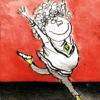Trump came right out and said he expected Raffensperger to give him some votes so that he could win.
Former President Donald Trump said Wednesday he had no regrets about his demand that Secretary of State Brad Raffensperger “find” enough votes to reverse his election defeat, a recorded conversation that is at the center of an ongoing Fulton County criminal probe.
Pressed about the call at a CNN town hall by moderator Kaitlan Collins, Trump said Raffensperger “owed me votes because the election was rigged” and repeated false conspiracy theories about his defeat in 2020 by Joe Biden.
“Owed” him votes. That’s so interesting.
Legal experts said Trump’s remarks could bolster [Fulton County District Attorney Fani] Willis’ case as she nears an announcement, expected as early as July, whether she’ll seek criminal charges against Trump and key members of his inner circle.
“Subjects of criminal investigation aren’t usually reckless enough to go on national television and admit their corrupt intent, but Donald Trump just handed Fani Willis a new piece of evidence and tied a bow on it,” said Antony Kreis, a Georgia State University constitutional law professor.
“Trump stated in relatively plain terms that he felt entitled to votes as a matter of personal right, regardless of the evidence laid before him that he did not win Georgia, and that vote tallies and recounts be damned he is going to pressure Brad Raffensperger,” Kreis added.


